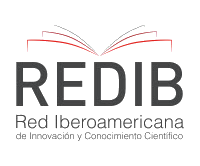The convergence to the epistemology of artistic education
##plugins.themes.bootstrap3.article.main##
This paper is a first convergence to the epistemology of artistic education, understood as regional epistemology, that is, that accounts for a specific knowledge; For this, three parts have been articulated: the first one deals with the fundamental concepts such as education, art, artistic education, in the second a recount is established on the learning and teaching of artistic education taking into account the most significant experiences of the training and artistic education from the art of caverns and pre-Columbian until our days; The third synthesizes the most relevant contemporary theories of artistic education.
Downloads
##plugins.themes.bootstrap3.article.details##
Acha, Juan. Introducción a la Creatividad Artística. México, Ed. Trillas,1992.
Araño Gisebert, Juan Carlos. Arte, Creación y Creatividad. http://www.quadernsdigitals.net/articuloquaderns.asp?ldArticle=551.
Araño Gisebert, Juan Carlos. Op. Cit Ibídem.
Barbosa, Ana M. A imagen no en sino de Arte. Sao Paulo, ED. Perspectiva, 1986.
Bayer, Raymond. Historia de la Estética. La Habana, Ed. Instituto Cubano del Libro, 1971, p. 101-102.
Bruner, Jeróme. Realidad Mental y Mundos Posibles, Barcelona, Ed. Gedisa, 1994.
Efland, Arthur D. Una Historia de la Educación del Arte. Barcelona, Ed. Paidós. 2002, p. 26.
Efland, Arthur D. Op. Cit., p. 47.
Efland, Arthur D. Op. Cit. P. 55-56
Eisner, Elliot. En: http://www.getty.edu/artsednet/Ibídem.
Fernández Arenas, José. Arte Efímero y Espacio Estético. Barcelona, Ed Antropos, 1988.
Gadamer, Hans George. Verdad y Método. Valladolid,Ed Sígueme, 1967.
Garnerd, Howard. Educación artística y desarrollo humano. Buenos Aires, ED. Paidós, 1994.
Hauser, Amold. Historia Social de la Literatura y del Arte. Barcelona, Ed, Guadarrama/Punto Omega, 1980, p.311 Ibídem, p. 305.
Horta Mesa, Aurelio A. «El Componente Pedagógico en la Formación Artística y Cultural» en Memorias del Primer Seminario de Formación Artística y Cultural. Ministerio de Cultura. Santafé de Bogotá, ED. Imprenta Nacional de Colombia, 2000, p. 86- 87
Ibídem, p. 31-32
Ibídem, p. 39-41
Ibídem, p. 56-61
Ibídem, p. 64-66
Ibídem, p. 66-80
Ibídem, p. 81-98
Ibídem, p. 305-306
Lowenfeld, Victor y Britain, W Lambert. Desarrollo de la Capacidad CreadoraBogotá. Ed. Kapelusk, 1984.
Montaña, Antonio. ¿Que es Arte?. Bogotá, Ed. Instituto Colombiano de Cultura, 1972, pág. 16-18.
Olaya, Olga Lucía. «¿Qué se Espera del Docente de las Artes Plásticas y/o Visuales en el Aula? «En Memorias Primer Seminario de Formación Artística y Cultural. Ministerio de Cultura. Santafé de Bogotá, ED. Imprenta Nacional de Colombia, 2000, 214 p Ibídem.
Poli, Francesco. Producción Artística y Mercado. Barcelona, Ed. Gustavo Gili, 1976 Ibídem.
Read, Herbert, Educación por el arte. Buenos Aires, ED. Paidós, 1999.
Sánchez Vázquez, Adolfo. Invitación a la Estética. México, Ed. Grijalbo, 1992, pág. 145-249.
Terigi, Flavia. Reflexiones Sobre el Lugar de las Artes en el Currículo Escolar en AKOSCHKY, Judith, et al. Artes y Escuela. Barcelona, Ed. Paidós, 1998, pág. 13-91.














